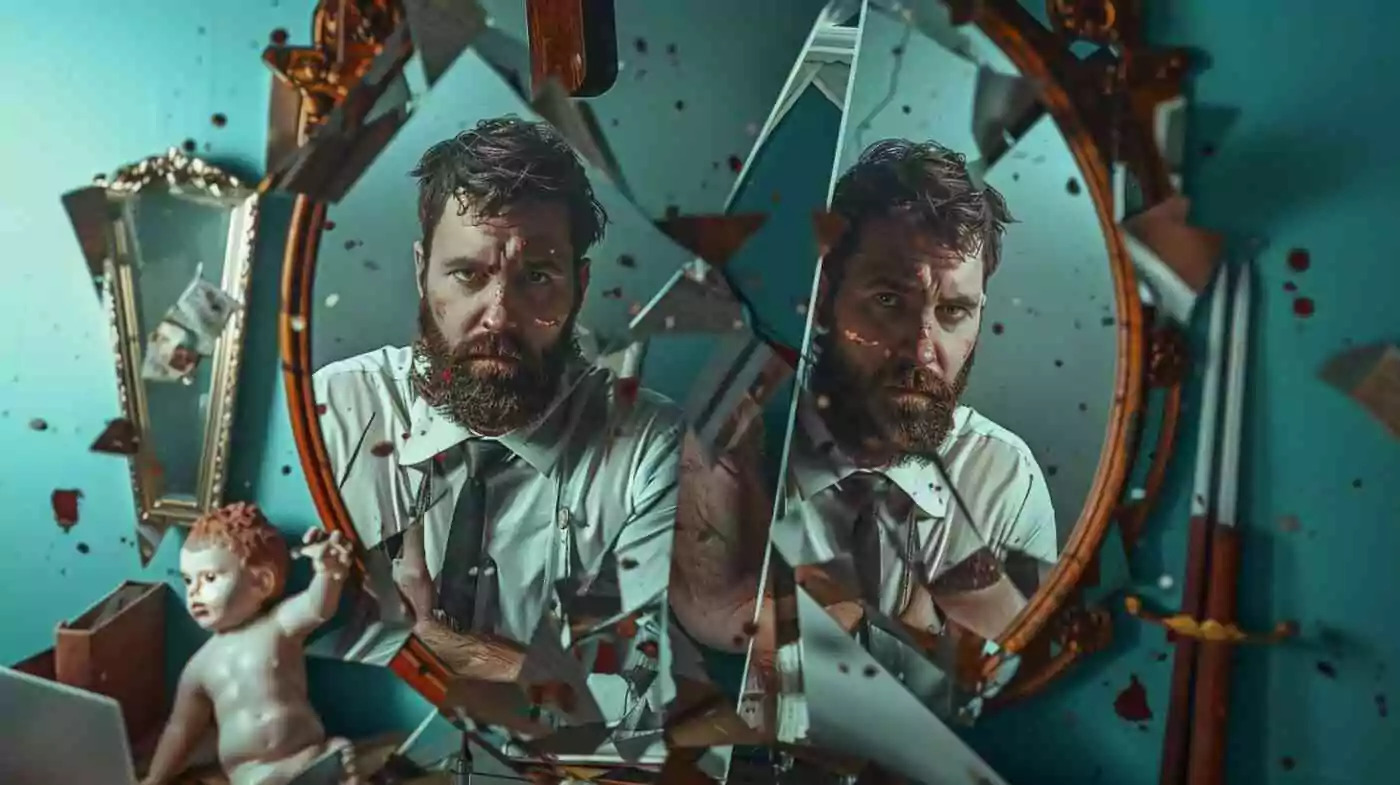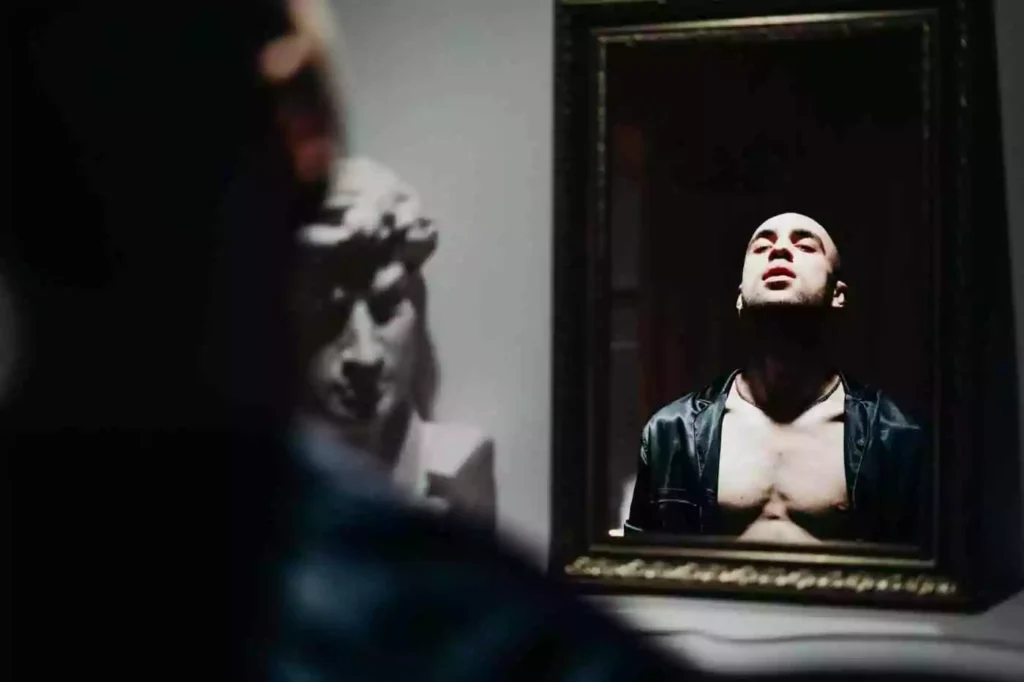Science
Echoes of Empire: The Brutal Roman Victory at La Loma
09 January 2026

Men instigate wars. They predominantly comprise the soldiers. The worst crimes that have shaken the world are committed by them. It is only recently that we have begun to openly discuss domestic violence, whose victims are overwhelmingly women and children. Since the dawn of civilization, society has lived in a patriarchal reality. Gender inequalities, the devaluation and humiliation of women, and violence against the weaker have made us fear male strength.
Expectations of men have evolved over the years. As explained by psychological mechanisms, women still seek in males the resources necessary to ensure safety for themselves and their offspring. However, the reality of the 21st century is not as cruel and harsh as it was decades ago, and thus male aggression, which was once necessary for survival, is now largely unwelcome.
In Equilibrium (2002), Kurt Wimmer’s dystopian film vision, we see a world where all emotions are prohibited and eradicated through a pharmacological invention. Emotions are deemed the cause of our species’ drive towards self-destruction, manifesting in disasters that threaten human existence.
In the real world, which has become the arena for countless local conflicts and two world wars, we strive for continual development, increasing our prosperity. Wars pose a threat to the capitalist world order, yet human greed so deeply permeates that bloodshed occurs, most often affecting the weak and innocent.
Pacifist tendencies that emerged in Western Europe, the United States, and Japan (which has a constitutional renunciation of war) were intended to prevent this. At the same time, they have altered the perception of men and, consequently, transformed the social expectations they face.
We recommend: Violence: A Daily Reality for Many Children
The pleasant man in a hat, with a briefcase in hand, returning home punctually at 4:30 PM, cheerfully calling out, “Honey, I’m home!” is a cultural image of the American man from the 1960s. Nearly 15 years after the end of World War II, during a similarly traumatic conflict for American society in Vietnam, men were portrayed on screen as devoid of realistic character traits. A similar collective fantasy is still presented in advertisements depicting the ideal family. In these representations, the husband and father are an exceedingly kind, good-looking “Superman”.
In schools, we increasingly observe fewer open physical confrontations between boys, colloquially known as fights. In traditional contact sports, such as football, we preach the primacy of the myth of noble team action, attempting to eliminate the once-desired tough play. The lack of social acceptance for any manifestations of one of the basic instincts, aggression, has led to a startling increase in auto-aggressive behaviors among boys, and more young men are reporting symptoms of depression and anxiety (though, fortunately, this may be due to a partial lifting of the “embargo” on male emotions).

The smiling, loving father, who is also an understanding and impeccably looking partner, by sunset should transform into a decisive and commanding lover. This is how men are presented in advertisements during the “prime time” TV slot.
An analysis of TV commercials cannot serve as a basis for diagnosis, yet cultural phenomena visible in media narratives construct a specific image of the hypothetical longings and needs of society.
Men in the 21st century face a challenging task. In a sense, fearing male aggression, both their own and that of their partners, we have set specific expectations, creating a kind of hybrid ideal – a man possessing the best male and female traits.
We strive to create a characterless and non-destructive “grown boy,” whose demeanor combines nurturing functions with traits such as responsibility and confidence. Unconsciously, we desire today’s man to be painfully politically correct and look impeccable, yet unafraid to get his hands dirty with grease fixing a broken car, which he quickly repairs before whisking his family away on a dream vacation. There, he will be both an explorer and a guide, yet allowing his partner to fulfill herself. He will be a feminist in full measure, but in times of danger, he will react decisively and effectively. It is a bit like sending a perfectly groomed, but unarmed soldier to the front. We set requirements but deprive them of the tools to fulfill them.
We recommend: Does modern man need authority?
Beyond the dictionary definition, which describes aggression as an intentional act of violence directed inward or outward, there is also the traditional understanding of this phenomenon from a psychoanalytical perspective. Freud believed that alongside sexual motivation, aggression is one of the most important human drives, essential for initiating and sustaining actions.
Labeling this term pejoratively has led us to describe only socially unacceptable behaviors as aggressive, such as physical or psychological violence. Meanwhile, sports anger, dissent against injustice, or the drive to achieve and win are constructs powered by psychoanalytically understood aggression.
Territorial and defensive behaviors are biologically conditioned phenomena that are necessary for survival in the animal world. Testosterone, the male sex hormone, indirectly influences the intensity of male-dominant behaviors. This does not mean they cannot be controlled in any way, as the frontal lobes of the human brain include areas responsible for inhibiting and controlling behavior, and excessive impulsivity occurs only in pathological states, one of the causes being a low level of serotonin in synaptic spaces. Thus, one can speak of “healthy aggression,” which serves an adaptive function.
Fortunately, men are increasingly unafraid to discuss their emotional difficulties, and thus more often seek help from specialists. However, it is concerning that an increasing number of boys exhibit self-destructive behaviors and feel confusion related to gender identity, and young men more frequently suffer from depressive and anxiety disorders.
Unacknowledged and blocked anger, which suddenly appears in the teenage years, is often a symptom of changing hormonal activity. Increased testosterone production not only causes physical changes but also emotional ones. Drives come to the forefront – not only sexual but also aggressive behaviors. The lack of acceptance for manifestations of male-dominant behaviors – such as anger, the need for competition, and the desire to win – leads to the deprivation of these needs. However, they do not simply “disperse into nothingness.” Deeply suppressed anger turns into sadness, and one of the available ways to discharge immense frustration is through compulsive behaviors, such as non-suicidal self-injury.
Upon reaching sexual maturity, the emotional instability caused in this way is partially mitigated, but its symptoms do not disappear. The condition transitions into a chronic state, manifesting as depression and/or anxiety disorders.
One of the flagship arguments of proponents of single-sex schools is that boys and girls are raised differently. Indeed, each gender goes through developmental stages in entirely different ways and identifies with a parent – mother or father. Some even claim that modern schools are designed for girls. Regardless of such radical assertions, it is worthwhile in education to adopt certain universal standards that form the basis of thinking about humanity.
There is nothing wrong with being caring and nurturing, and true strength lies in the awareness of one’s advantage and the ability to control one’s instincts. This is contingent, however, on being aware of our masculine side of character – our animus (an archetype by Jung, denoting the male side of personality) – and not repressing it deep into the unconscious. Nature’s force will eventually assert its rights, and the release of repressed drives might manifest in inappropriate and socially unacceptable ways.
In the world created by James Cameron in the Avatar films, instead of saying “I love you,” the phrase used is “I see you.” Perhaps this is what love is about: first seeing the “human in the human,” accepting their needs and limitations, thus embracing them entirely, without exclusion. Love not only aids in teaching and upbringing. Love can heal.
Translation: Klaudia Tarasiewicz


Science
08 January 2026

Zmień tryb na ciemny